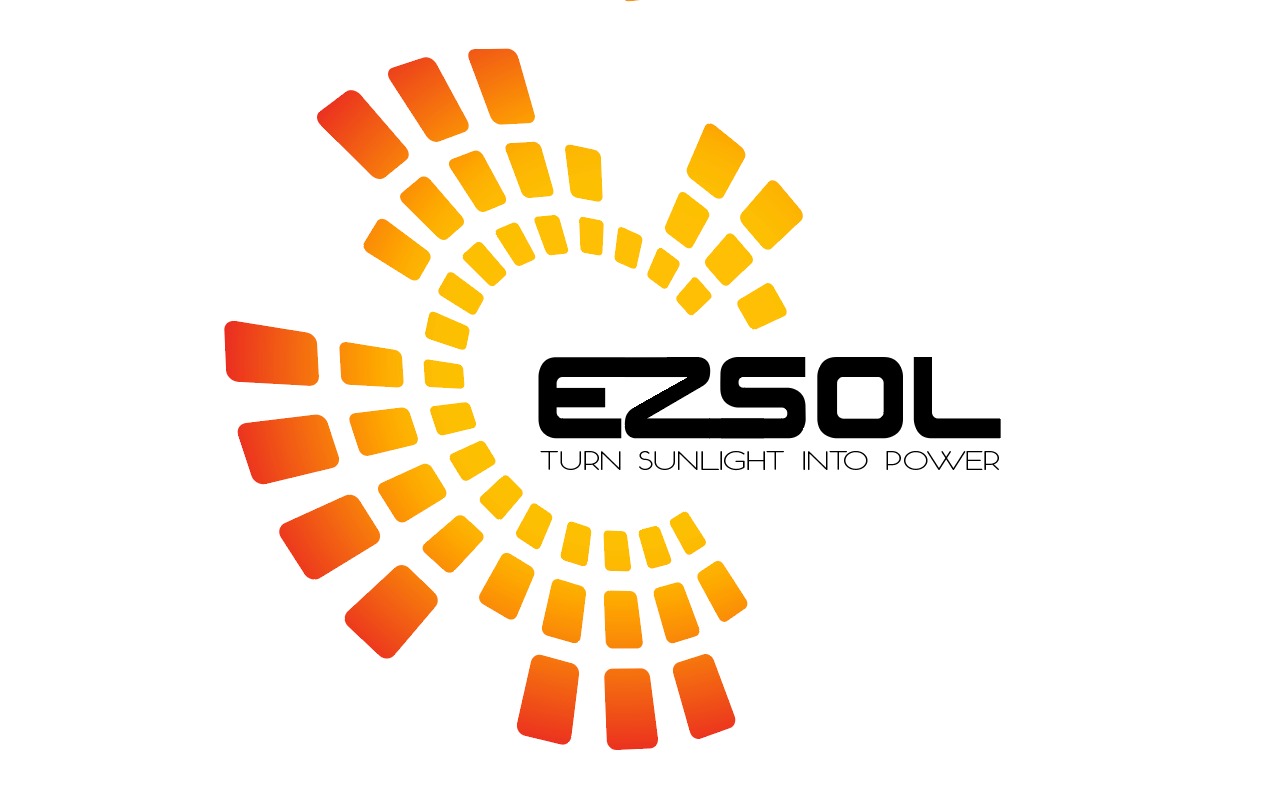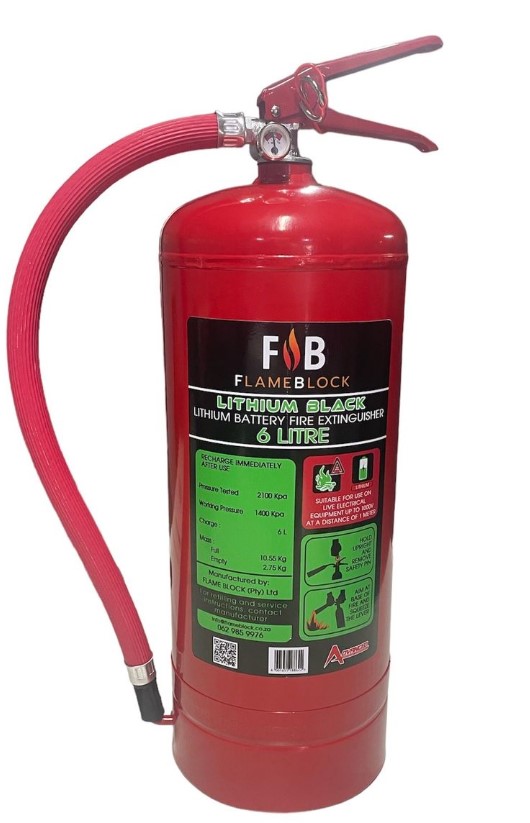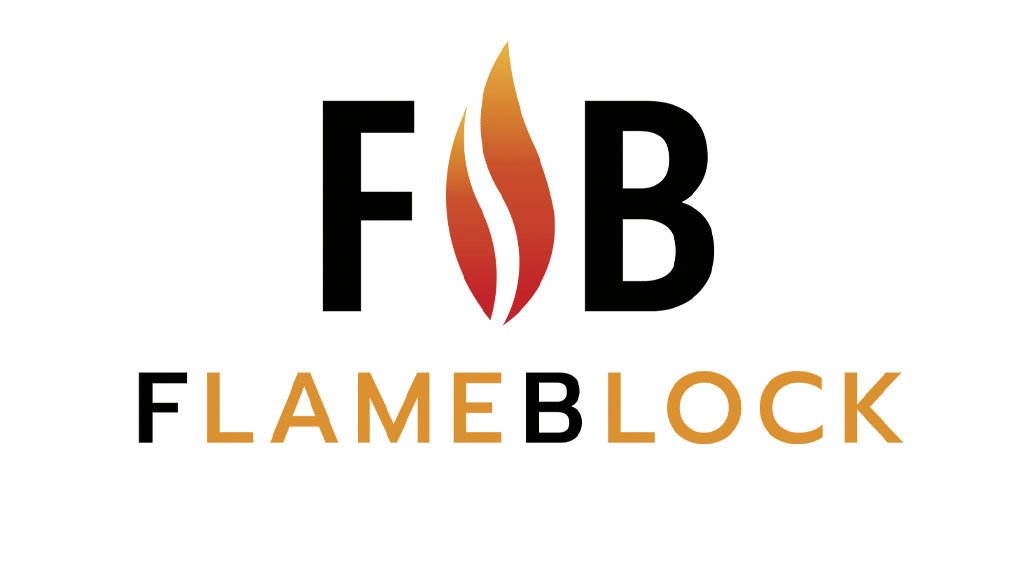Lithium Fire Extinguisher
R3200,00
Incl. VAT and Shipping around Cape Town
FlameBlock fire extinguishers are uniquely formulated and developed to kill lithium-ion battery fires.
PLEASE NOTE:
RETURN POLICY
· Product has to be unused
· Needs to be in original packaging
· 14 business days to be returned/exchanged
· Needs a reasonable explanation for return/exchange
· Tax Invoice to be sent with delivery note
How does it work?
How does FlameBlock Lithium Black work?
FlameBlock Lithium Black is made using a specific formulation of salts and minerals to effectively extinguish and smother lithium fires.
This distinctive formulation does the following to a lithium-ion battery fire:
- Extinguish the fire.
- Bring the temperature of the batteries down to 80 degrees Celcius.
- Continues to cool the battery.
- Interferes with the chemical reaction of the battery.
- Interferes with the oxygen radicals released by lithium.
- Covers the battery to prevent gas escape.
- Discharges the battery to prevent re-ignition.
After using FlameBlock Lithium Black fire extinguishers they can be refilled by approved service centres across South Africa.
In depth information
The FlameBlock Lithium Black (FLB) is a complex mixture of minerals and dissolved organic and inorganic materials that is based on nano-technology and large-scale interruption of the combustion chemistry to achieve enhanced flame-extinguishing properties. There are no synthetic polymers added to the formulation. The ingredients in the Lithium Black impart unique properties to the final product. Through ionic and hydrogen bonding of the nano-additives, a three-dimensional gel structure is obtained that gives the final product storage stability and imparts the formation of a layered coating on the battery. Other ingredients play a role in increasing the boiling point of the product as well as decreasing the freezing point. These additives actively promote cooling of the intense heat of the lithium-ion battery fire.

Figure 1. Molecular structure of industrial synthetic anti-oxidant.
The FLB is formulated to directly interfere with the chemistry of the fire. A fire can be described as a cascading oxidative degradation process. Many different chemical species exist as very energetic free radicals during the life-time of the fire. Introducing a very powerful anti-oxidant into this chemical cycle quenches the oxidation process. In Figure 1, a common synthetic anti-oxidant used in the plastic industry is shown. This type of anti-oxidant is a hindered phenol called 2,6 -di- tert-butyl-4-methylphenol. Many examples of naturally occurring free radical inhibitors, antioxidants or quenchers exist in nature such as vitamin C. FLB is designed to use these natural anti-oxidants to quench the free radicals produced during the combustion process thus helping to extinguish the fire. When it comes to fire everyone is familiar with the fire triangle
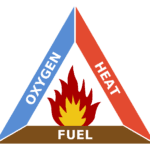
Figure 2. Customary fire triangle explaining the contributions of oxygen (air), heat and fuel to fires.
FLB is formulated to deal with all three aspects that contribute to the formation of a fire. A fire as in the case of the lithium battery is complicated. The metal oxides used in the formulation of a lithium battery can liberate oxygen at high temperatures which can make the lithium ion battery self-sustaining in terms of the fire triangle when it comes to the availability of oxygen. It has its own reserves of heat, oxygen and fuel (metals and electrolytes) which means it can burn by itself unaided. The process leading up to a thermal runaway reaction is shown below.
Clearly an intervention to block one or more of the resources available to the burning lithium ion battery must be sought. FLB does this by a built-in cooling effect and the anti-oxidant that can interfere with oxidative degradation. In addition, the physical coating left on the burning battery smothers the fire and cuts off air.
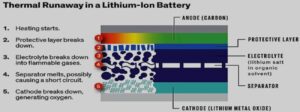
Figure 3. Steps leading up to a thermal runaway reaction in conventional lithium-ion batteries.
Figure 4 shows the point at which decomposition of the separator membrane as toted in Figure 3 begins. This starts with the melting of the membrane. At this point the onset of catastrophic failure begins until the final thermal runaway occurs. A thermal runaway is defined as a rate of temperature increase of greater than 10 oC per minute. As such it is similar to runaway chemical reactions as found for example in industries such as those where phenolic resins are made.
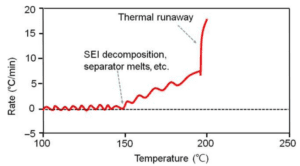
Figure 4. Temperature increase relative to exposed temperature to illustrate point of thermal runaway.
FLB has been formulated taking all the evidence regarding the chemistry of lithium-ion battery fires into account and what is practicality required for a product to quickly bring a lithium ion battery fire under control and to keep it from re-igniting. This takes into consideration the chemistry of the battery as well as the response of the battery to high temperatures and other means such as breach of the battery integrity that may cause a thermal runaway to occur.
Product Benefits
-
Suitable for the use in most fire suppression systems and fire extinguishers.
-
Provides a layer on the lithium batteries that reduces heat and provides a smothering effect to
minimize access to air for re-ignition.
-
Extinguishes metal fires and specifically lithium battery fires within seconds and keeps the final
temperature significantly below 100 °C.
-
The product is environmentally safe and will be tolerated and absorbed in any exposed
ecosystem without affecting fauna and flora adversely.
-
The unique formulation provides for a cost effective method to attack lithium fires at any scale including large-scale battery units.
Shelf Life
Periodic investigation of the product to prevent settling should be undertaken every 6 months. The product is formulated to prevent settling of any dispersed components and if the product is stored in a cool dry place ( < 30 °C) the shelf life should extend to 2 years or longer.
Physical Properties
The product is a black viscous liquid that has a gel-like structure when not disturbed. It flows readily when a force is applied on it. It has a woody smell due to the natural anti-oxidants. It can withstand short exposures to extreme cycles of hot and cold due to its formulation of organic salts although exposure to severe cold conditions (< -20 °C) and high temperatures (> 50 °C) is not encouraged.
Health & Safety
While the product is formulated in such a way to be environmentally friendly and degradable, contact with very high concentrations of the product, i.e. large quantities in streams or large spillages on soil can lead to sensitivity and chemical shock due to changes in the ionic strength of soil and water. Small amounts of the product in gutters, streams or on soil will not negatively affect fauna and flora. After application, thinning the concentration of the product by washing it away with water is an environmentally safe way to dispose of it.
If the product is spilled in small quantities on hands or other parts of the body, use soap and water and rinse with a large amount of water. The product may cause reddening or allergic reaction to eyes and mucous membranes.
Packaging
6 Litre pressurised fire extinguisher
Application
FLB can be applied with specific fixed applicators such as in motor vehicles and battery packs. It can also be applied using a standard fire extinguisher normally associated with water-based synthetic foams.
Servicing of Equipment
Service Extinguisher annually or immediately after use.
Cleaning of sprayed Items
Normal tap water can be used to clean the surface of any item treated with FLB. Similarly, in areas where tap water is not available fire water, industrial water or sea water can be used.
Directions to use
After extinguishing the lithium batteries, leave the FLB on the product. The FLB forms a layer around the lithium ion battery that suffocates the fire and prevents air from reaching the hot spots. FLB also forms a relatively strong binder that opposes bubbling and breaking of the film that normally can allow air to continue the fire triangle.
